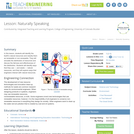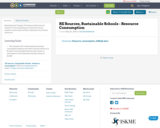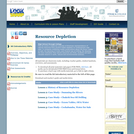
With a continued focus on the Sonoran Desert, students are introduced to the concepts of biomes, limiting factors (resources), carrying capacity and growth curves through a PowerPoint® presentation. Abiotic factors (temperature, annual precipitation, seasons, etc.) determine the biome landscape. The vegetative component, as producers, determines the types of consumers that form its various communities. Students learn how the type and quantity of available resources defines how many organisms can be supported within the community, as well as its particular resident species. Students use mathematical models of natural relationships (in this case, sigmoid and exponential growth curves) to analyze population information and build upon it. With this understanding, students are able to explain how carrying capacity is determined by the limiting factors within the community and feeding relationships. By studying these ecological relationships, students see the connection between ecological relationships of organisms and the fundamentals of engineering design, adding to their base of knowledge towards solving the grand challenge posed in this unit.
- Subject:
- Applied Science
- Ecology
- Engineering
- Life Science
- Material Type:
- Lesson Plan
- Provider:
- TeachEngineering
- Provider Set:
- TeachEngineering
- Author:
- Amber Spolarich
- Wendy J. Holmgren
- Date Added:
- 09/18/2014



